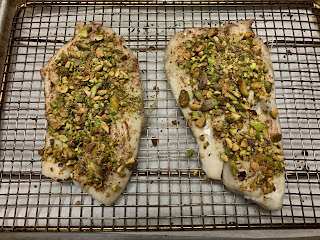It’s back to basics in the West kitchen this morning with sourdough waffles made from Farmer Direct Foods flour in rural New Cambria. The recipe uses a Quick Overnight Sourdough Starter. This recipe links includes not only the recipe but how to maintain, store and even freezer the starter + I’ve included a few links to sourdough bread recipes on our blog.
Sourdough Waffles Make about 10 waffles, depending on size of waffle maker
I actually make a half batch. To reduce an egg to half, break into a bowl, mix with a fork until blended and then pour out about half.
Wrap and freeze or refrigerate extra waffles, then pop in the toaster for waffles on demand!
Recipe from Rita Davenport’s Sourdough Cookery. cookbook,
Recipe from Rita Davenport’s Sourdough Cookery. cookbook,
2 cups all-purpose flour (or use part whole wheat flour)
2 cups lukewarm water
1/2 cup sourdough starter
2 level tablespoons granulated sugar
1 teaspoon salt
1/2 teaspoons baking powder
5 tablespoons vegetable oil
3 eggs
1/2 teaspoon baking soda dissolved in 1 tablespoon water
- THE NIGHT BEFORE: Add flour and water to sourdough starter. Beat until smooth, cover with towel or plastic wrap and let stand in a warm place overnight.
- NEXT MORNING: To the batter, add sugar, salt, baking powder and oil.
- Beat in eggs.
- Gently fold in dissolved baking soda Do not stir after baking soda has been added.
- Pour and spread batter on a lightly greased, preheated waffle grids. Cook for 6 to 8 minutes. Repeat.
- Keep waffles warm in an oven set on low.

We served our waffles with Zey's store-made sausage and Vermont Orange Ambrosia.
Recipe without photos . . .
Sourdough Waffles Make about 10 waffles, depending on size of waffle maker
I actually make a half batch. To reduce an egg to half, break into a bowl, mix with a fork until blended and then pour out about half.
Wrap and freeze or refrigerate extra waffles, then pop in the toaster for waffles on demand!
Recipe from Rita Davenport’s Sourdough Cookery. cookbook,
Recipe from Rita Davenport’s Sourdough Cookery. cookbook,
2 cups all-purpose flour (or use part whole wheat flour)
2 cups lukewarm water
1/2 cup sourdough starter
2 level tablespoons granulated sugar
1 teaspoon salt
1/2 teaspoons baking powder
5 tablespoons vegetable oil
3 eggs
1/2 teaspoon baking soda dissolved in 1 tablespoon water
- THE NIGHT BEFORE: Add flour and water to sourdough starter. Beat until smooth, cover with towel or plastic wrap and let stand in a warm place overnight.
- NEXT MORNING: To the batter, add sugar, salt, baking powder and oil.
- Beat in eggs.
- Gently fold in dissolved baking soda Do not stir after baking soda has been added.
- Pour and spread batter on a lightly greased, preheated waffle grids. Cook for 6 to 8 minutes. Repeat.
- Keep waffles warm in an oven set on low.

































